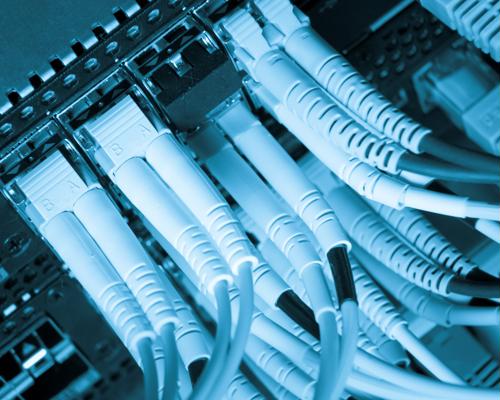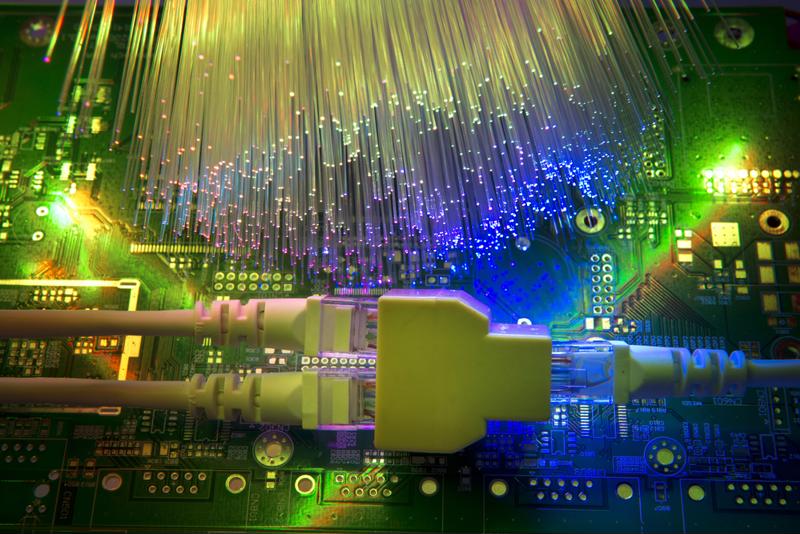
Next-gen broadband over copper could be available next year
By Max BurkhalterJune 22, 2015
Big companies love standardization. And why not? Nothing is cheaper than working with a one-size-fits-all solution. That's why it's no surprise that there has been a shift across industries dependent on data centers toward falling in love with fiber. Telecoms are looking to uproot miles and miles of copper wire in order to establish a more lucrative fiber-optic standard. At the same time, growing amounts of critical business information requires companies running data centers to keep their Internet connection ahead of the curve.
It's seems evident that the era of copper is over and the rise of fiber is on its way, but switching over from one technology to the next is prohibitively expensive. And while employees would enjoy browsing the Web with a really, really fast Internet connection, the immediate benefits of switching to fiber are still catching up with the cost of the technology. That's why more accessible solutions to this problem are already in the works.
Leading the pack is g.Fast, a modem chip designed by Alcatel-Lucent and chipmaker Sckipio Technologies to deliver speeds over copper wire anywhere from 200 to 500 megabits per second. Experts have been talking about broadband over copper for years, and speed trials that mimic normal conditions have shown positive results. Your IT staff may be able to put the claims to the test themselves, as well as potentially save thousands of dollars in cable replacements, as early as next year.

Fiber optics is on the rise but don't count out copper yet.
What to do with all that copper?
The fact that numerous industries are pushing for the superiority of fiber-optic cable over copper wire belies two major facts. First, that it would be significantly more efficient to focus on updating copper connections than ripping them all out and laying down new fiber. Second, that copper distribution is so extensive that full access to fiber won't be a reality for many consumers for at least another decade.
Take these two pieces of information into account and the need for technology like g.Fast makes perfect sense. Ars Technica pointed out that of almost 90 million land lines in the United States, only about 7 million of those connections are fiber. The days of universal fiber access are far in the future, especially for rural and less technologically focused communities. Proponents of fiber optics would very much prefer you not consider the millions of Internet users set to be left out in the cold.
A non-peripheral approach will help the pace of g.Fast's adoption
PC World noted that top speeds available over g.Fast technology would allow users to access data-intensive content like 4K streaming and cloud-based storage over copper. This would be a major step forward in terms of removing barriers to broadband, and the fact that developers worldwide are designing around a "plug-and-play" approach means that businesses won't have any trouble figuring out where g.Fast technology fits into their network.
Data centers can get ahead of the copper curve
It's not hard to imagine how companies might utilize g.Fast technology and faster speeds over copper wire. Some facilities will simply appreciate the speed boost to their copper network. Others will look to combine g.Fast applications with fiber, creating a "last mile" connection over copper that minimizes the cost of implementing fiber without losing any of the performance perks. Such fiber to Ethernet equipment is already available, so it will only be a matter of time before these solutions are combined to cut costs. The development is good news for all data center employees who have vocally resisted periodic "Cu later" attitudes toward copper infrastructure over past few years.
International summit reflects copper's growing appeal
The Broadband Forum, an international consortium dedicated to the advancement of DSL technologies and wider access to broadband, met earlier this month to try out the latest plug-in technology supported by g.Fast, said Light Reading. A total of 14 companies met and tested new options for copper broadband, reflecting a growing International interest in this timely alternative to fiber. While fiber cables are certainly the way of the future, the next era is a long time coming. Copper is quickly developing into a cost-effective alternative that can be deployed in the present.
Perle has an extensive range of Managed and Unmanaged Fiber Media Converters to extended copper-based Ethernet equipment over a fiber optic link, multimode to multimode and multimode to single mode fiber up to 160km.



